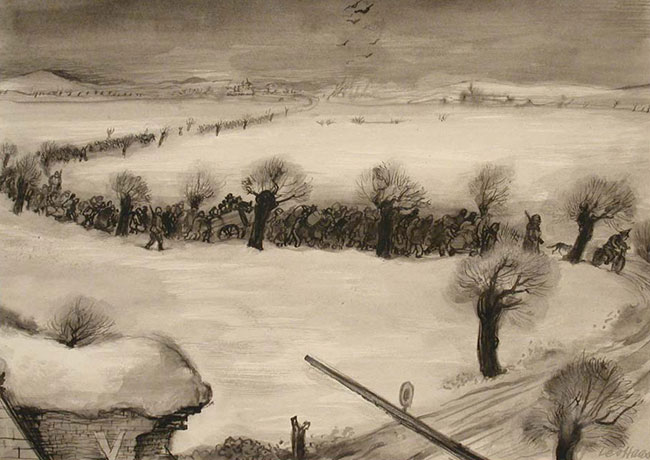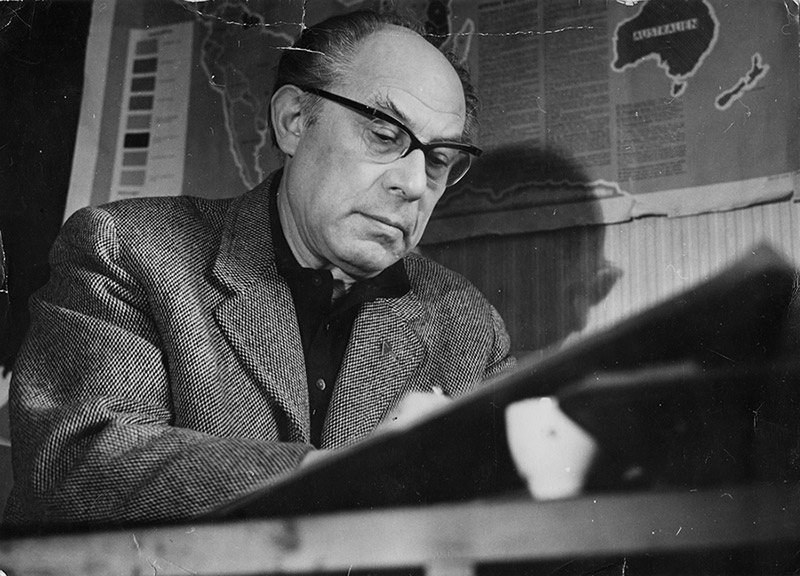
India ink and wash on paper
37.7 x 49.2 cm
Collection of the Yad Vashem Art Museum, Jerusalem
Gift of the Prague Committee for Documentation, courtesy of Ze’ev and Alisa Shek, Caesarea, Israel

Leo Haas graduated from the Academies of Fine Arts in Karlsruhe and Berlin. Between 1924 and 1938 he practiced painting and graphic work in Vienna and Opava. Haas was arrested in 1939 on account of being a member of the Communist party and his activities therein; he was expelled to the Nisko camp, then to forced labor in Ostrava. In September 1942 he was transported to the Theresienstadt ghetto, where he was assigned to the Technical Department. There he worked on propaganda materials for the Germans, but together with other artists he secretly painted scenes of ghetto life. In June 1944 the painters were accused of smuggling their artworks out of the ghetto. Haas was imprisoned in the Small Fortress and viciously tortured. In October Haas was deported to Auschwitz; one month later, he was transported to the Sachsenhausen camp, where he was forced to work on Operation Bernhard counterfeiting foreign currency with the other artists. In February 1945 he was transported to the Mauthausen and Ebensee camps, where he was liberated. After the war, Haas retrieved about four hundred of his paintings from the ghetto. Haas and his wife later adopted the three-year-old son, Tommy (Tomáš), of their artist friend Bedřich Fritta who was murdered in Auschwitz.